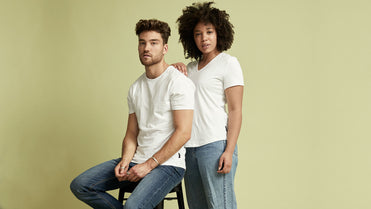The world of fabrics is really confusing, and with multiple fabric names being blasted around by brands each season it can be difficult to know which one to pick, especially in terms of sustainability and planetary impact.
With synthetic fibres being public enemy number one (courtesy of the only recently discovered microfiber emergency), the eco fashion world is obviously steering toward natural fabrics such as cotton or bamboo. Sadly neither are perfect, with cotton requiring enormous amounts of water to grow and bamboo requiring intensive chemicals to process. It's truly a minefield, and if you’re not prepared to walk around nude, what’s the alternative?
With resources running dry and climate change in full swing, we have a limited amount of time to start finding new materials. That’s why at Citizen Wolf, we’ve decided to make an old material new again… hemp.
So what is hemp fabric?

Hemp fabric is produced from fibers taken from stem and stalk of the cannabis plant which are softened in water, broken up and spun or woven into fabric. Hemp is an incredibly versatile and durable material with a texture very similar in look and feel to linen. Weight depends on how it’s processed and what it’s mixed with, we’ve chosen 160 gsm (grams per square metre) blended with organic cotton for softness.
But let’s clear the air with the question you’re probably thinking – is hemp the same as marijuana? Well, the answer is yes and no.
Industrial hemp is marijuana’s sober cousin, both from the same species of cannabis plant that has been cultivated for millennia, but you can’t get high from hemp. Marijuana is generally taken from the flowers or ‘buds’, and contains high level of the active psychotropic ingredient Tetrahydrocannabinol (THC). Hemp however, contains low amounts of THC and high amounts of Cannabidiol (CBD) which is cultivated for both medicine and textiles.
Where did hemp come from?
Hemp has been one of the most significant crops for mankind up until this last century. It is astonishing to see how the widespread use of hemp has been deteriorated to such an extent that people barely recognise it as anything but a plant that “gets you high”.

Hemp is one of the oldest known cultivated fabrics globally, found used as far back as 8,000 BC! But once mechanical farming became mainstream, cotton took over as the favoured fabric, and then cheap synthetic fabrics swooped in from the 1950s onwards. As these industries took favour, hemp was pushed out and tarnished with its association to marijuana.
In recent years, the tables have started to turn against synthetic fabric and hemp fabric is becoming a new (but actually very old) trend thanks to its incredible properties. It’s currently legal to own hemp products such as clothing, but only legal to grow in some countries and specific states.
How sustainable is hemp fabric?
As a crop, hemp is exceptionally environmentally positive. It requires around 50 percent less water to grow per season than conventional cotton and can grow in a range of soils at high yield. The plant is also extremely durable and requires low to zero pesticides.
As a textile hemp is biodegradable, versatile and long lasting. It's also both breathable and UV resistant, which makes it perfect for the Aussie summer. Best of all, hemp is like a fine wine that magically gets better (and softer) with age.
What are you waiting for?!?








